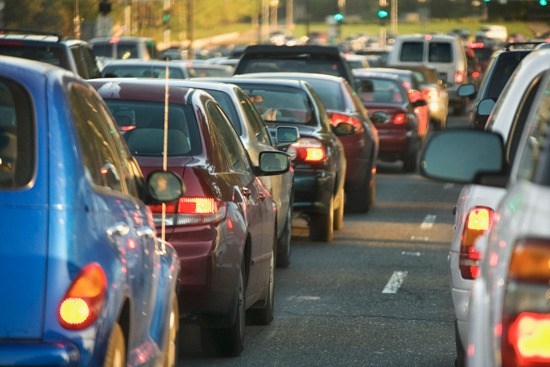In an effort to raise revenues for maintaining and improving roads amid falling gas taxes and traffic impact fees, Bonney Lake is considering creating a transportation benefit district, much like dozens of other cities like Buckley and Enumclaw.
The city held a public hearing to let city residents give their input on the idea during the regular council meeting March 29.
Only one resident spoke at the public hearing, letting the council know he does not approve of the transportation benefit district and thinks there are other, more innovative options the city should look at before enacting another tax.
Public hearing testimony is often discussed during the City Council’s workshop meetings. The next regularly scheduled workshop is April 5 at 5:30 p.m.
What are Transportation Benefit Districts?
According to a report put together for the council by City Administrator Don Morrison, transportation benefit districts allow cities and counties to collect revenue, commonly through a vehicle license fee, in order to maintain and improve roads, transit services, sidewalks, as well as cover construction, maintenance and operation costs of any related projects.
The vehicle license fee can be as large as $50 without voter approval, but there are several steps a district must take before setting the fee.
A district must first have a $20 vehicle license fee for 24 months, and then the district can increase the fee to $40. The district must wait another 24 months before increasing the fee to $50, but any fee imposed without a vote of the district’s residents over $40 is subject to a referendum.
Districts can impose fees up to $100, but only with approval by a simple majority (50 percent) of district voters.
Voters can also approve a sales and use tax up to 0.2 percent to fund their transportation district with a simple majority of votes.
Other funding options include passing a general obligation bond (only attempted once in the state, according to the city, and failed), a border area fuel tax (which is only available to districts on the Canadian border), impact fees on commercial and industrial development, vehicle tolls, excess property taxes and local improvement districts.
What is Bonney Lake’s plan?
According Morrison, the city’s 20-year (2005 – 2025) Transportation Improvement Plan has roughly $40 million in projects to be paid for by the city left in its books.
Unfortunately, the city saw an 80 percent drop in traffic impact fees between 2008 and 2012, Morrison said. Last year, the city collected around $248,000 in traffic impact fees.
And the gas tax, even while it’s been cut by the state legislature, only funds the street department and is not able to fund construction projects, Morrison continued.
“If we are down to collecting $250,000 a year in revenue, it’s going to take a lot to make a dent in the $40 million backlog in street projects,” he explained. “There’s not much. And most of the other cities are in the same boat. That’s why a lot of them have created TBDs.”
The ordinance the city may pass to create the district, Ordinance D16-22, only creates the district and does not set a vehicle license fee.
That would have to be set in another ordinance, Morrison said, but the city doesn’t seem to be looking too closely at setting a license fee.
Instead, the city seems more interested in asking voters to approve a sales tax up to 0.2 percent.
According to Morrison, sales tax in the city has dropped 0.5 percent, so a .02 percent increase in sales tax will still mean residents and visitors are paying less in tax than they were a few years ago.
A sales tax also effects everyone who shops in Bonney Lake and not just residents like a licence fee would.
“That’s a way for those who drive on our streets but don’t pay taxes to the city can help contribute to repairing, expanding and improving the streets,” Morrison said.
The city estimates it would create more revenue with a sales tax than with a license fee. A license fee is estimated to generate around $240,000 in revenue, based on a 2012 count of vehicles in the city, while a sales tax could more than triple that.
“That would be enough to make a pretty good dent on some projects,” Morrison said.
The city hasn’t put together a timetable for putting the measure on a ballot.


